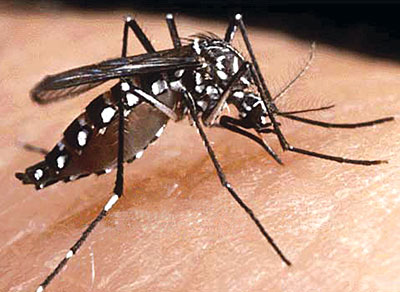 |
For starters, most newscasters in Nepal pronounce 'dengue' incorrectly. Forget the 'oo', extend the 'ey', and at least we know what we're talking about.
Dengue fever is a newly emerging viral illness in Nepal. This year in the Tarai, dengue was documented in the summer in large numbers for the first time. This wasn't altogether surprising, for two reasons: we had a migrant population with the disease and an abundant supply of the vector (carrier), mosquitoes.
Because of the porous border with India, many migrant labourers (both Nepali and Indian) with the disease enter Nepal. All that's needed is for the vector mosquito to feed on one such infected person for it to transmit the disease to a healthy person.
Importantly, different species of mosquitoes transmit different diseases. It's the aedes species of mosquito that's responsible for transmitting dengue. The mosquito species that transmit malaria (anopheles) and Japanese encephalitis (culex) will not transmit dengue. These three illnesses, all common in the Tarai, may often cause just fever and headache without any localising signs. Add typhoid, typhus, and leptospirosis to this potpourri, which may all cause only fever and headache and it is obvious why Nepal (and indeed South Asia) is rich in undifferentiated febrile illnesses. These diseases are often difficult to distinguish from one another and make specific diagnosis difficult.
The incubation period (the amount of time it takes to manifest the disease) is usually not more than 10 days after leaving a dengue-infested area, which helps tremendously in diagnosis in a visitor. For most people who do not reside in areas where dengue is endemic, dengue illness means fever, headaches, eye pain, and joint aches that subside in a week's time. Doctors will treat only the symptoms as there is no specific antidote to dengue. Those living in areas where dengue is endemic are repeatedly exposed to it, and could be subject to a more life-threatening variant of the disease: dengue haemorrhagic illness.
For prevention, use mosquito repellents (like odomos or DEET) and wear full-length clothing even in the daytime as the dengue mosquito is active during the day, unlike the malarial mosquito. A dengue vaccine is in the works and could soon be commercially available.


